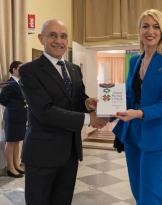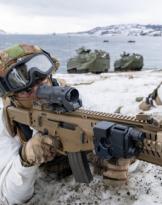The navy strongly wanted the project for the introduction into service of remotely piloted aircraft on naval units to become a reality. The project is destined to acquire ever greater operational relevance in the coming years.
The installation of what was necessary for the operation of the Camcopter aboard the San Giusto ship was the result of an intense study carried out by the navy staff, the air-maritime experimental center and the flight crew of the fourth Grottaglie helicopter group.
The results of this enterprise, to be shared with the technical staff of the manufacturer Schiebel, and the goodness of the strategic choices matured over time are now tangible in the humanitarian operation currently conducted by the navy. In fact, in the Mare Nostrum operation, the ability and speed of locating and identifying vessels is of extreme importance, in order to safeguard the greatest number of human lives. The Camcopter, thanks to its sensors, a significant autonomy, a favorable cost-effectiveness ratio and the absence of risk for the personnel involved, significantly improves and enhances the operational capabilities of the naval device.
The system and its FLIR (Forward Looking Infrared) sensor are controlled and commanded in flight by two stations, the MPCW (Mission Planning Control Workstation) and the PCW (Payload Control Workstation) installed inside the naval unit's operations center. The images collected in flight are sent on board the San Giusto in real time, making it possible to immediately identify the vessels of interest. These images can in turn be forwarded to the operational commands on land, favoring the decision-making processes of those in command and the coordination of operations at sea.

Source: Military Navy












